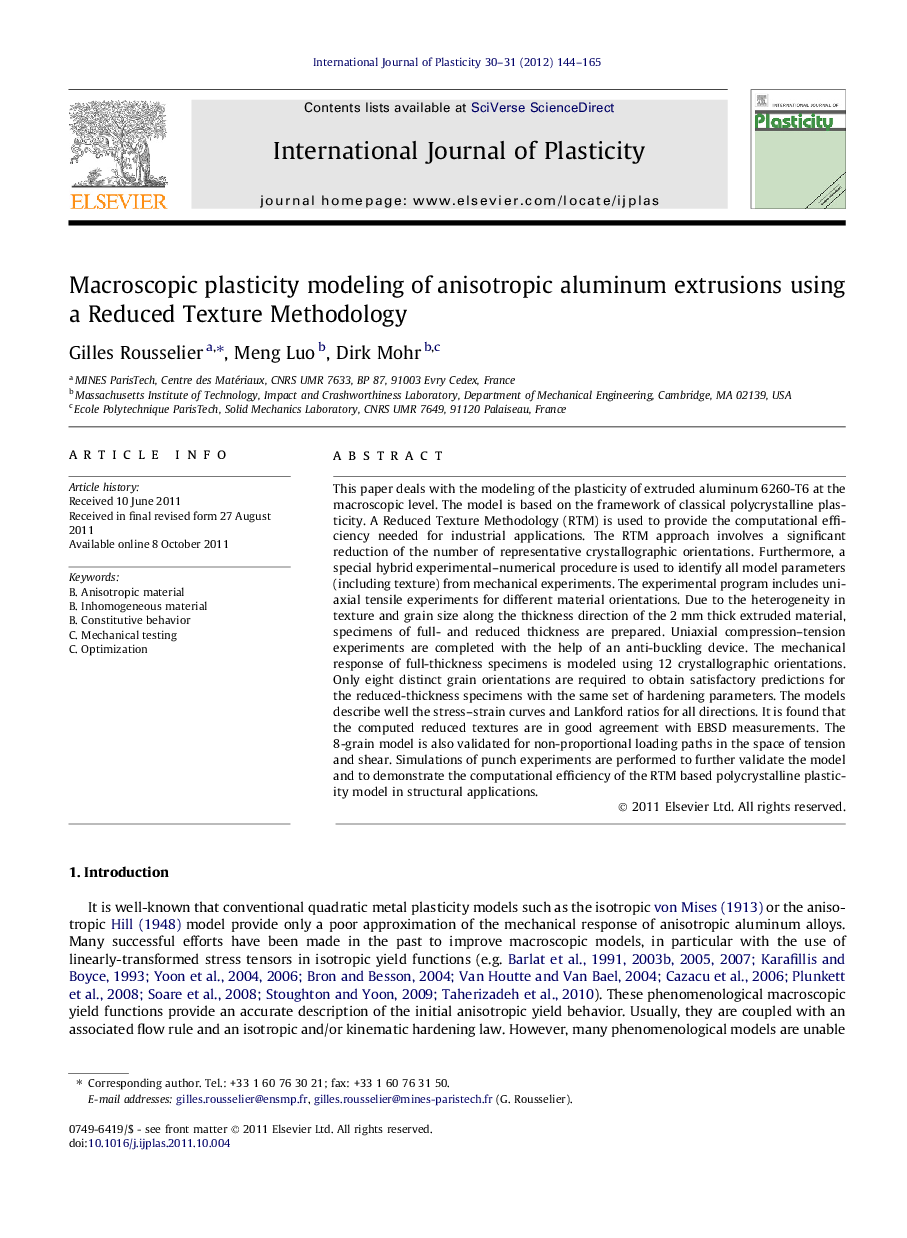| کد مقاله | کد نشریه | سال انتشار | مقاله انگلیسی | نسخه تمام متن |
|---|---|---|---|---|
| 784443 | 1465641 | 2012 | 22 صفحه PDF | دانلود رایگان |

This paper deals with the modeling of the plasticity of extruded aluminum 6260-T6 at the macroscopic level. The model is based on the framework of classical polycrystalline plasticity. A Reduced Texture Methodology (RTM) is used to provide the computational efficiency needed for industrial applications. The RTM approach involves a significant reduction of the number of representative crystallographic orientations. Furthermore, a special hybrid experimental–numerical procedure is used to identify all model parameters (including texture) from mechanical experiments. The experimental program includes uniaxial tensile experiments for different material orientations. Due to the heterogeneity in texture and grain size along the thickness direction of the 2 mm thick extruded material, specimens of full- and reduced thickness are prepared. Uniaxial compression–tension experiments are completed with the help of an anti-buckling device. The mechanical response of full-thickness specimens is modeled using 12 crystallographic orientations. Only eight distinct grain orientations are required to obtain satisfactory predictions for the reduced-thickness specimens with the same set of hardening parameters. The models describe well the stress–strain curves and Lankford ratios for all directions. It is found that the computed reduced textures are in good agreement with EBSD measurements. The 8-grain model is also validated for non-proportional loading paths in the space of tension and shear. Simulations of punch experiments are performed to further validate the model and to demonstrate the computational efficiency of the RTM based polycrystalline plasticity model in structural applications.
► Macroscopic modeling is based on polycrystalline plasticity.
► A “Reduced Texture Methodology” is used to provide computational efficiency.
► Experiments: tension, reverse loading, shear, non-proportional, punch test.
► Full-thickness specimens: 12-grain model, central layer: 8-grain model.
► Calibrated models and textures are in good agreement with experiments.
Journal: International Journal of Plasticity - Volumes 30–31, March 2012, Pages 144–165